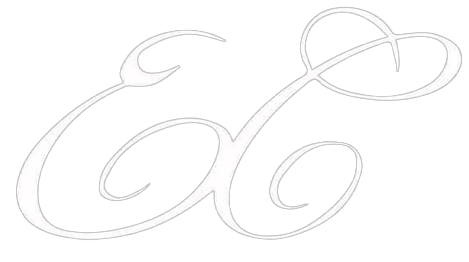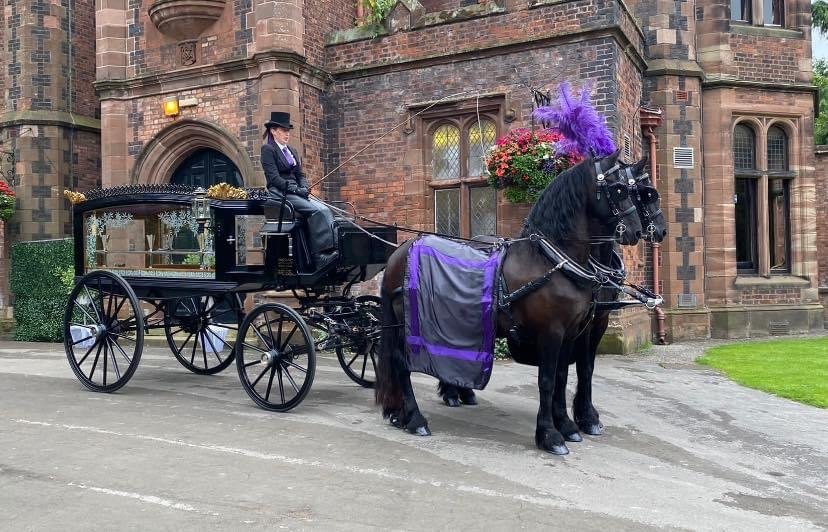A horse-drawn funeral is a powerful and respectful way to honour a loved one’s life. While elegant and memorable, it does require thoughtful planning to ensure everything runs smoothly and reflects the wishes of the family and the deceased. We look at what to consider when planning a horse-drawn funeral
A Sense Of Tradition
Horse-drawn funerals offer a sense of tradition and reverence that modern motorised hearses often lack. For many, this kind of procession harks back to a time when funerals were more community-focused and intimate. The steady rhythm of hooves and the grace of the carriage provide a calming atmosphere that can help mourners process their emotions.
This type of farewell is especially fitting for those with a love of horses, rural backgrounds, or a fondness for timeless traditions. Whether used for religious or secular services, a horse-drawn funeral offers a moment of stillness and significance in a busy, often overwhelming day.
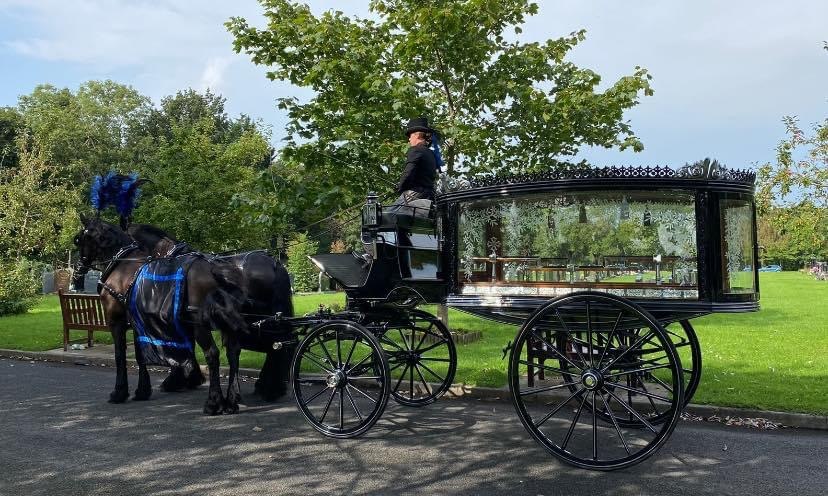
Choosing the Right Carriage Style and Colour
Carriages come in a variety of styles, each offering its own distinct appearance. Black carriages remain the traditional choice, offering a sense of formality and classic dignity. White carriages, by contrast, provide a softer, more graceful impression that may be especially appropriate for younger individuals or ceremonies with a lighter tone.
Many carriages feature glass sides, allowing mourners to see floral arrangements and the coffin, which can make the journey more personal. Some providers offer ornate styles with brass detailing or polished wooden finishes, and personal touches like ribbons, flowers, or colour themes can be added to reflect the unique life being honoured.
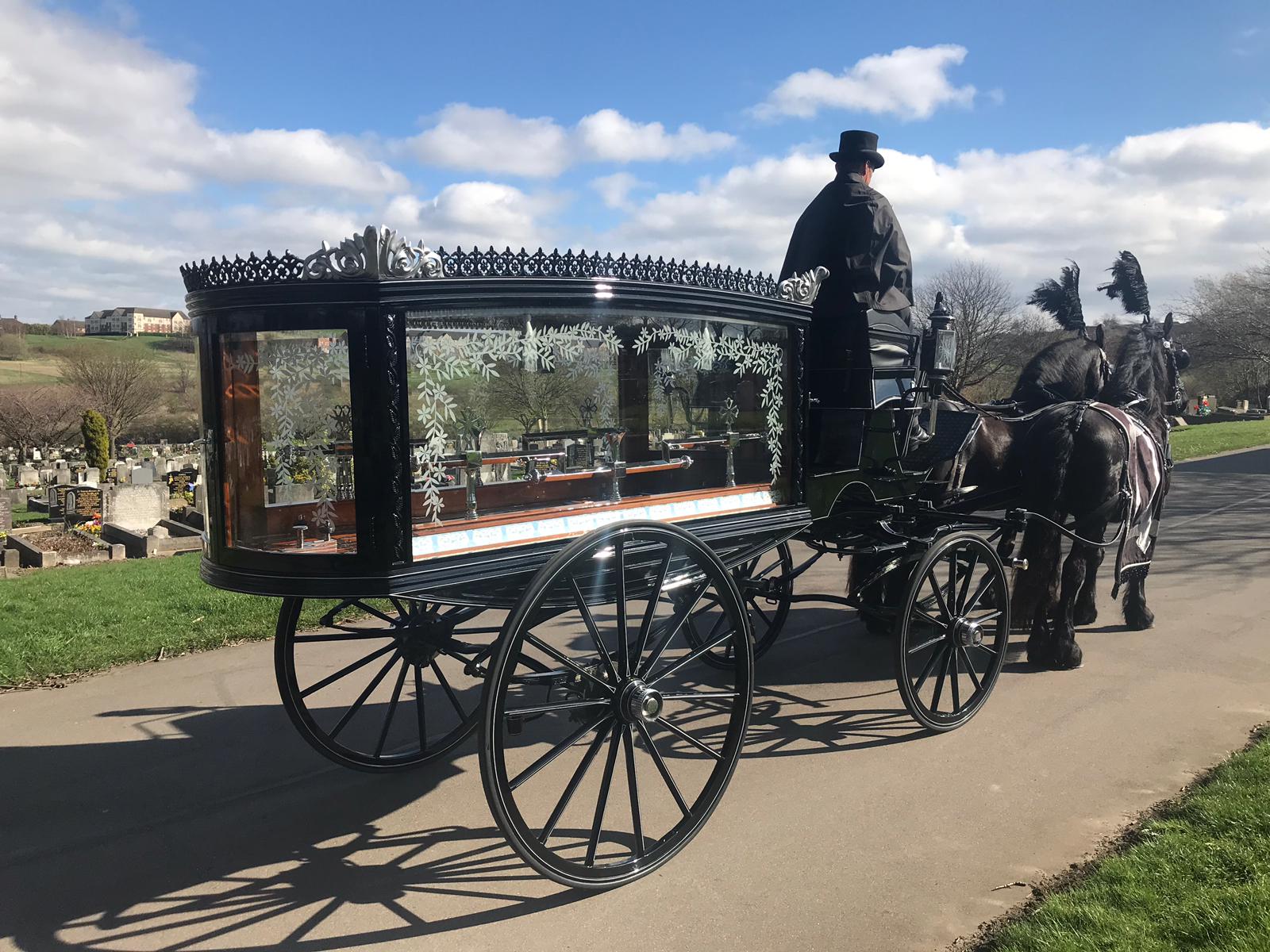
Selecting the Horses
The horses are a central and symbolic part of the ceremony. Most funeral providers offer a choice between black and white horses. Black horses convey a strong, traditional tone, while white horses often represent peace and purity, particularly meaningful for young people or those with a calm, gentle personality.
You can often choose between pairs, teams of four, or even six horses depending on the formality of the event and your preferences. Decorative plumes, coloured harnesses, and other adornments are also available. These touches allow the procession to reflect the life, values, or even the favourite colours of the deceased.
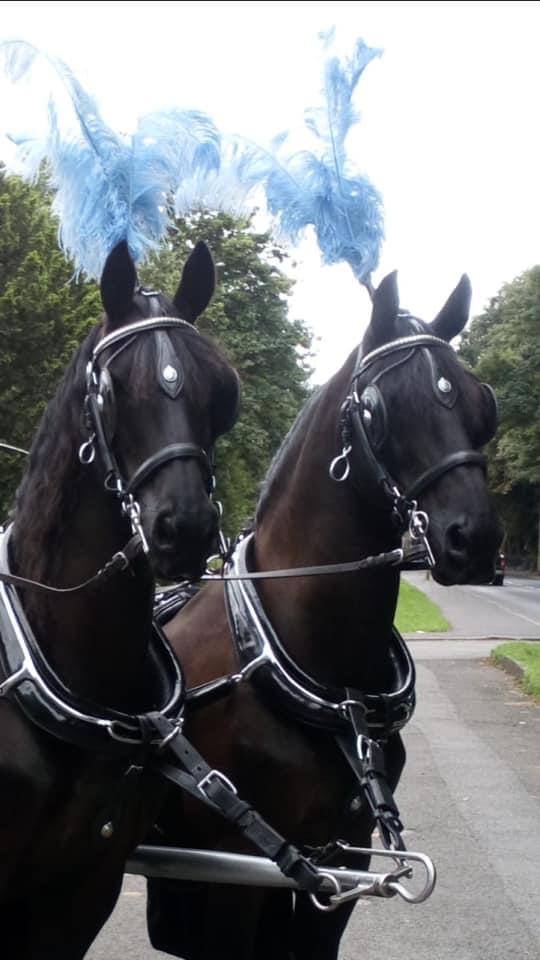
Planning the Route
One of the most meaningful aspects of a horse-drawn funeral is the opportunity to plan a personal route. Families may choose to pass the procession by the loved one’s home, a park they visited, or a meaningful place of work or worship. These choices make the farewell feel even more intimate and respectful.
Due to the slower pace of the horses, it’s important to keep the route manageable. A short journey can still be powerful, especially if it includes locations that mattered to the deceased. Funeral directors and carriage providers will work with you to plan a safe and symbolic route that suits the day’s timing.
Distance and Timing Considerations
Timing is essential for horse-drawn funerals. The carriage travels at walking pace, so routes that take minutes by car may take significantly longer by horse. You’ll need to account for this when planning the overall schedule, particularly if a church or crematorium has time restrictions.
It’s also important to think about road conditions and the season. Steep hills, narrow roads, or heavy traffic can complicate the journey. Winter weather, rain, or strong wind may require a backup plan. Your chosen provider will usually survey the route in advance to ensure it’s practical and appropriate.
We offer Horse Drawn Funerals with personalised options to honour your loved one. To learn more, please get in touch to organise your funeral transport.
